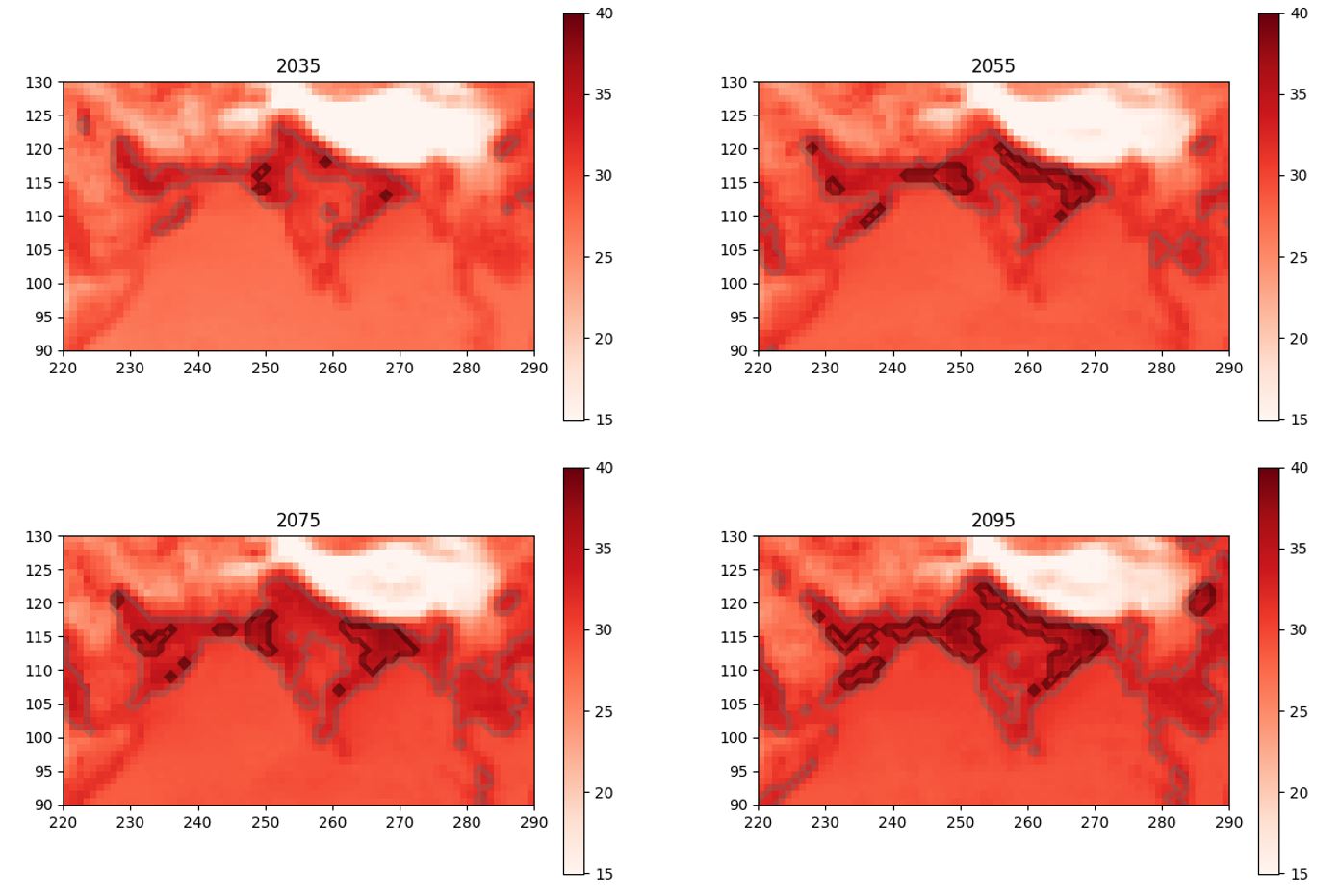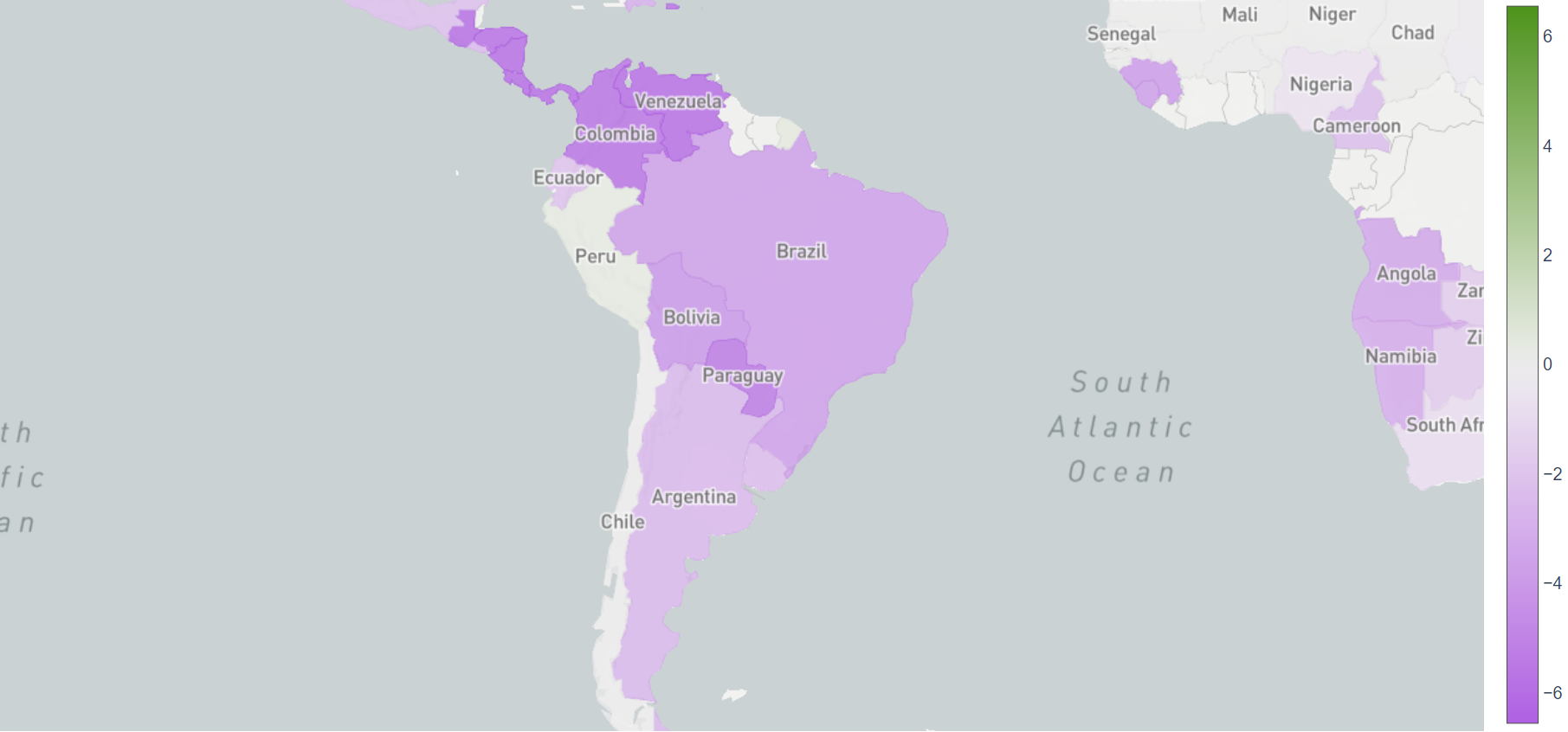Heatwaves are headline news – 2023 is shaping up to be the hottest year on record. Temperatures reached new heights this spring across Portugal, Spain, Morocco and Algeria made the international news agenda (1). India, Bangladesh, Thailand and Laos all saw record temperatures of up to 45°C in April, causing deaths in some countries, melting roads and requiring many people to seek hospital treatments (2).
In central China, temperatures recorded in March in the cities of Wuhan and Zhengzhou were more than ten degrees centigrade higher than normal for that time of year (3). In the UK, the government is taking action to cut heatwave deaths (4) with the launch of a public alert system. July 4th was, according to data from the US Centers for Environmental Prediction, was the hottest day ever recorded globally.
Humidity and heat stress
Reports of these increasingly frequent weather events usually focus on air temperature but one critical factor, humidity, is often overlooked when discussing heatwaves and the resulting heat stress. Humidity is significant because it affects the physiological impacts of a heatwave. In high-humidity environments, the effectiveness of sweating is greatly reduced, making it difficult for the body to cool down.
The wet-bulb temperature
A more indicative metric of the potential of heat stress to occur is the wet-bulb temperature, which is determined by wrapping a thermometer in a cloth saturated with water. When water evaporates from the cloth, it cools the thermometer, causing it to register a lower temperature than if it were only measuring the air temperature. The cloth’s ability to evaporate water is reduced in more humid air, which is comparable to how the process of sweating works in humans and animals.
This method of measurement matters. A wet-bulb temperature of 32°C means that even people who are accustomed to high temperatures are unable to complete outdoor tasks (5). With heatwaves becoming more commonplace, climate change may well push some areas to wet-bulb temperatures beyond the physical limit of human survival (6), especially in the tropics where humidity is high.
Limits of human survival
In the United States, Southeastern states have reported wet-bulb temperatures in excess of 31°C for which the National Weather Service (NWS) considers “extreme danger”, while parts of Arizona and California have reported wet-bulb temperatures up to 35°C, already challenging the limits of human survival (7). The 2021 heatwave in the Pacific Northwest cost the lives of around 200 people at a wet-bulb temperature of around 25°C.
In June 2023, the National Weather Service reported “extreme” wet-bulb temperatures above 32°C in Louisiana and Texas, which has been found to have been made five times more likely by climate change (8).

Figure 1: Map of wet-bulb temperatures for 28 June 2023 issued by the National Weather Service, showing extreme temperatures in the Southeastern states of Louisiana and Texas.
Climate change and extreme heat stress
According to a study from the UK Met Office (9), the number of people affected by extreme heat stress, defined as wet-bulb temperatures above 32°C for more than ten days per year, could increase 15-fold to more than a billion people if there is a 2°C increase in global temperatures due to climate change. Sadly, this is well within the realms of possibility.
Consider the maximum wet-bulb temperature output from the GFDL ESM4 climate model, illustrating different time periods for a pessimistic climate scenario of SSP 5-8.5 (representing high GHG emissions and estimated warming of 2.4°C according to temperature projections from the IPCC Sixth Assessment Report) in the Indian subcontinent. The black contours on the map outline regions where the model predicts the maximum wet-bulb temperature will exceed the 35°C limit for human survival. The grey contours enclose areas where the maximum wet-bulb temperature is projected to exceed 32°C, resulting in extreme heat stress.

Figure 2: Projected maximum yearly wet-bulb temperatures in the Indian subcontinent from the GFDL-ESM4 climate model. The area inside the grey contours are projected to experience temperatures above 32°C, and the area inside the black contours are projected to experience temperatures above >35°C.
Economic implications
The potential for increased heat stress in the Indian subcontinent will have profound implications for rice cultivation. This region is responsible for much of the world’s rice production, with India (178 million tonnes, 24 per cent of global production) and Bangladesh (54 million tonnes, seven per cent of global production) ranking second and third respectively, after China. Rice production relies heavily on manual labour and increased heat stress will make it more challenging for workers to operate under such severe conditions. Given that rice farmers often come from economically disadvantaged backgrounds, heat stress is likely to exacerbate poverty in this part of the world.
Other sectors could suffer too. In Bangladesh, the textile industry, which accounts for approximately 80 per cent of the country’s exports and twelve per cent of its GDP (10) is of particular concern. With frequent reports of poor conditions for workers and a high prevalence of illness, the situation is expected to worsen with climate change (11).
Livestock are also susceptible to heat stress, with cattle starting to become stressed at wet-bulb temperatures around 17°C, and severe heat stress setting in at 27°C, which can lead to a considerable drop in milk production (up to 40 per cent according to thecattlesite.com; Dairy Australia, 2023) and reduction in quality (12).
Projected downturns
According to analysis by Risilience, dairy yields in Brazil are projected to decrease by around four per cent and in Central America by six to eight per cent by 2040 due to heat stress (Figure 3). For a pessimistic climate scenario (SSP 5-8.5), economic losses from meat and milk from cattle could reach $40bn per year globally by the end of the century, roughly ten per cent of the value from 2005. For a more optimistic climate scenario (SSP 1-2.6), losses could reach around $15bn, approximately four per cent of the 2005 value (13).

Time for action
The effects of wet-bulb temperature heatwaves occurring around the world are already cause for concern. Economic losses, quality of life and increased fatalities will worsen as climate change intensifies.
Only strategic action to reduce greenhouse gas emissions and limit global warming will minimise and mitigate these losses and impacts. With the most recent update from the World Meteorological Organisation (14) warning that global temperatures are forecast to surge to record levels in the next five years, now is the time to turn net-zero plans into action.
- Read Feeling the heat – now is the time to understand the business of net zero and download the Risilience report: Why a science-led TCFD report is good for business, or get in touch to learn how we can help you develop and action a credible net-zero plan.
References
(2) https://www.bbc.co.uk/news/world-asia-65631464
(5) Raymond, Matthews and Horton, 2020
(6) https://www.theguardian.com/science/2021/mar/08/global-heating-tropical-regions-human-livability, 2021
(7) ‘Wet Bulb’ Heat Across the US Can Be Deadly Even to Healthy People (insider.com)
(10) Palutikof, 2019
(11) Yeasmin et al., 2022
(12) Mayer et al., 1999
(13) Thornton et al., 2022
